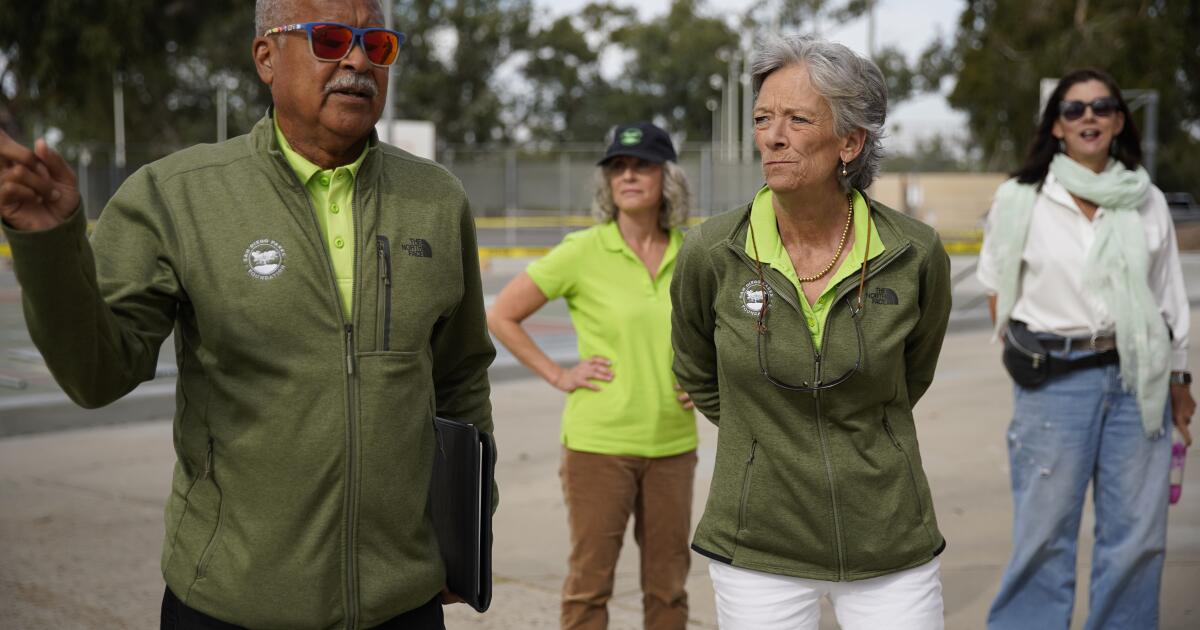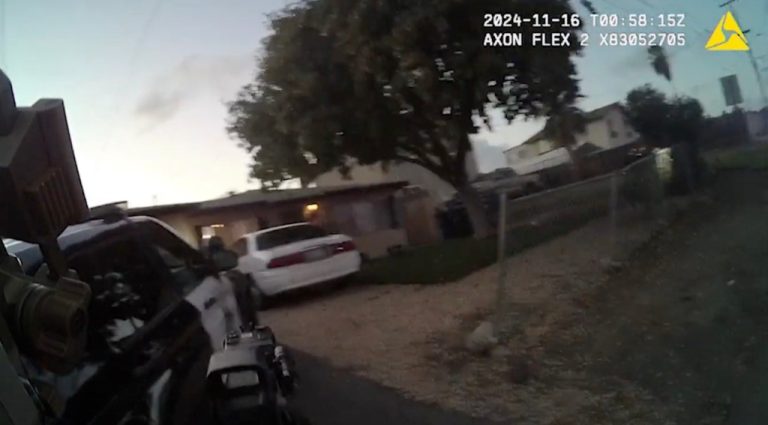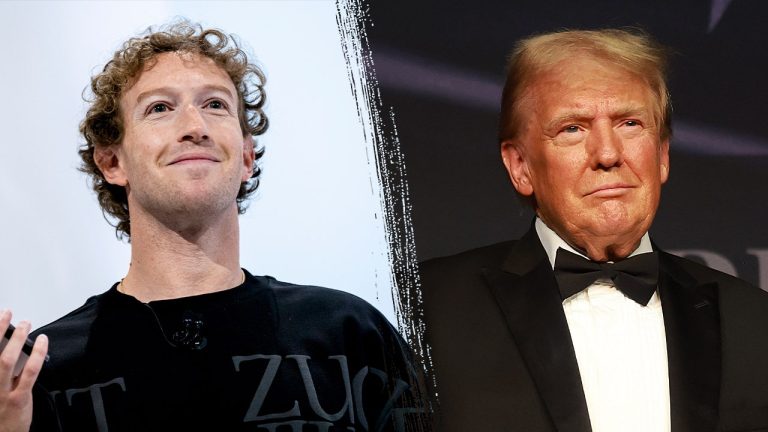
San Diego was one of the last major cities in the nation to get a parks foundation to help fund upgrades and activities — but those who created it five years ago say it may have come just in time.
They say San Diego’s plans for high-rise housing across the city make it more urgent than ever for a foundation to help close the stark gap in quality between parks in the northern and southern parts of the city.
“Parks are essential to our existence, and more so in a densely developed urban environment,” said co-founder Vicki Granowitz, a longtime North Park resident.
“People living in apartments don’t have back yards and don’t have front yards, so you need parks to allow people to have space,” she said. “It helps with mental health, it helps with reducing domestic violence — just the ability to have breathing room.”
The foundation, which is quietly celebrating its fifth anniversary this month, has avoided parks in wealthy areas so it can focus on the low-income areas city officials deem communities of concern.
It also doesn’t fund or lobby for projects in the city’s famous regional parks like Mission Trails, Balboa or Mission Bay, focusing instead on low-profile projects in San Diego’s 400 neighborhood and community parks.
Key projects have included installing free Wi-Fi at all 60 city recreation centers, planting 327 trees in 11 parks, creating a new basketball court in Southcrest and starting the Parks After Dark summer movie series in low-income areas.
The foundation is also helping fund a $500,000 community garden in Linda Vista Community Park, which is surrounded by many rent-restricted apartments whose tenants don’t have land for their own gardens.
When it’s completed next year, it will be San Diego’s first community garden inside a city park. But foundation leaders say they hope it won’t be the last.
“Our system here is inequitable, and what we’ve tried to do is address those inequities in a structural manner,” said Michel Anderson, the foundation’s board chair.
A 2021 audit found that recreation centers in San Diego’s northern neighborhoods on average get more funding, host more activities and attract more participants than rec centers in the city’s southern neighborhoods.
That same year, a consultant’s analysis found that northern neighborhoods have larger parks with more amenities and that the lion’s share of city parks in significant disrepair are in southern neighborhoods.
Anderson said the foundation prefers to focus on making quiet progress instead of blaming past city leaders.
“We don’t embarrass anybody, we don’t point fingers, we just get it done,” he said. “But the need and demand is great, and we can’t do everything.”
Recent estimates show a backlog of repairs and upgrades needed at city parks totaling more than $1 billion.
That’s why the foundation also has legislative ambitions. Last year, it helped get a new city parks master plan approved that aims to boost equity by funneling money to parks in low-income areas.
And the foundation has been trying — unsuccessfully so far — to get a parcel tax on the November 2024 ballot that would provide $250 million for city parks and libraries.
The foundation has also gained momentum on fundraising, with revenue totaling more than $1 million last year — up from about $162,000 in 2019, its tax filings show. Its annual operating budget has climbed from $170,000 to $1.6 million in just five years, Anderson said. The long-term goal is $10 million.
The foundation has two full-time employees and expects to name a new executive director in coming weeks, he said.

Handball courts getting repaired with pickleball stripes added at Linda Vista Community Park. Such re-striping has been a mainstay of parks foundation work.
(Alejandro Tamayo/The San Diego Union-Tribune)
Another goal is shifting from securing money primarily from foundations and government agencies to focusing on individual donors.
“We haven’t turned that corner yet,” said Martha Phillips, the foundation’s treasurer.
Anderson said he thinks donating to the parks foundation will be appealing to donors because they’ll know where their money is going.
“They’d much rather give money to a foundation rather than directly to the city,” he said. “It’s a black hole when you give money to the city. We only spend it on neighborhood and community parks.”
None of the founders could explain why San Diego previously didn’t have a parks foundation, unlike pretty much every major city in California and the nation.
“The surprise to me was how a city this big could go as long as it did without a parks foundation,” Anderson said.
Granowitz said the foundation started to come together six years ago when Herman Parker, then the city’s parks director, noticed that two separate things with significant potential were happening at roughly the same time.
In 2017, City Attorney Mara Elliott declared that volunteers at city recreation centers could no longer handle donations, which prompted creation of a special committee to explore how to continue funding activities at the centers.
Meanwhile, prolific La Jolla volunteer Ann Dynes met with Parker to discuss an idea for a parks project that he said would be ideally funded by a parks foundation — if the city had one.
Dynes then took steps to create the foundation with several other people enthusiastic about parks, including members of the special committee like Marcella Bothwell, who now serves as chair of the San Diego Parks and Recreation Board.
Bothwell said the volunteers then began exploring how parks foundations operated in cities such as Portland, Seattle, New York and Los Angeles.
“We looked at what all of them were doing, saw how their structures were set up,” she said.
Once they established their legal nonprofit status, they participated in a cross-country webinar with a former parks commissioner for New York City, which has faced struggles with neighborhood equity that are similar to San Diego’s.
“That really helped crystallize what we could become,” Anderson said.

Skateboarding coach Jake Wittpenn, 25, helps Akira Ozawa, 6, at Linda Vista Community Skate Park on Monday, Nov. 13. The park is getting a community garden — the first in a San Diego city park — thanks to the parks foundation’s efforts.
(Alejandro Tamayo/The San Diego Union-Tribune)
Bothwell stressed that at its best, the foundation won’t be doing exciting things. Instead, it will be tackling more mundane but arguably more important projects — things like resurfacing tennis courts, fixing water fountains and re-striping handball courts into pickleball courts.
“It’s very sexy to create a new park,” she said. “What’s not sexy is maintaining older parks and making small upgrades the residents really want.”
But some might say the foundation’s Parks After Dark program is exciting. Launched last year in Linda Vista, Skyline and City Heights community parks, the program expanded to Memorial Park this summer and will likely expand further in 2024, Anderson said.
“We’re getting immense pressure to put them in even more parks,” he said.
Foundation officials say the program, partly funded by Price Philanthropies, attracts hundreds of teens in low-income areas to a park on summer weekend nights, keeping those teens safe and out of trouble.
City Councilmember Raul Campillo, whose district includes Linda Vista Community Park, praised the foundation and the program during a public hearing this fall.
“Year after year, summer after summer, you are getting more attendees,” Campillo told Anderson. “That means healthier and safer communities.”
For details, visit sandiegoparksfoundation.org







